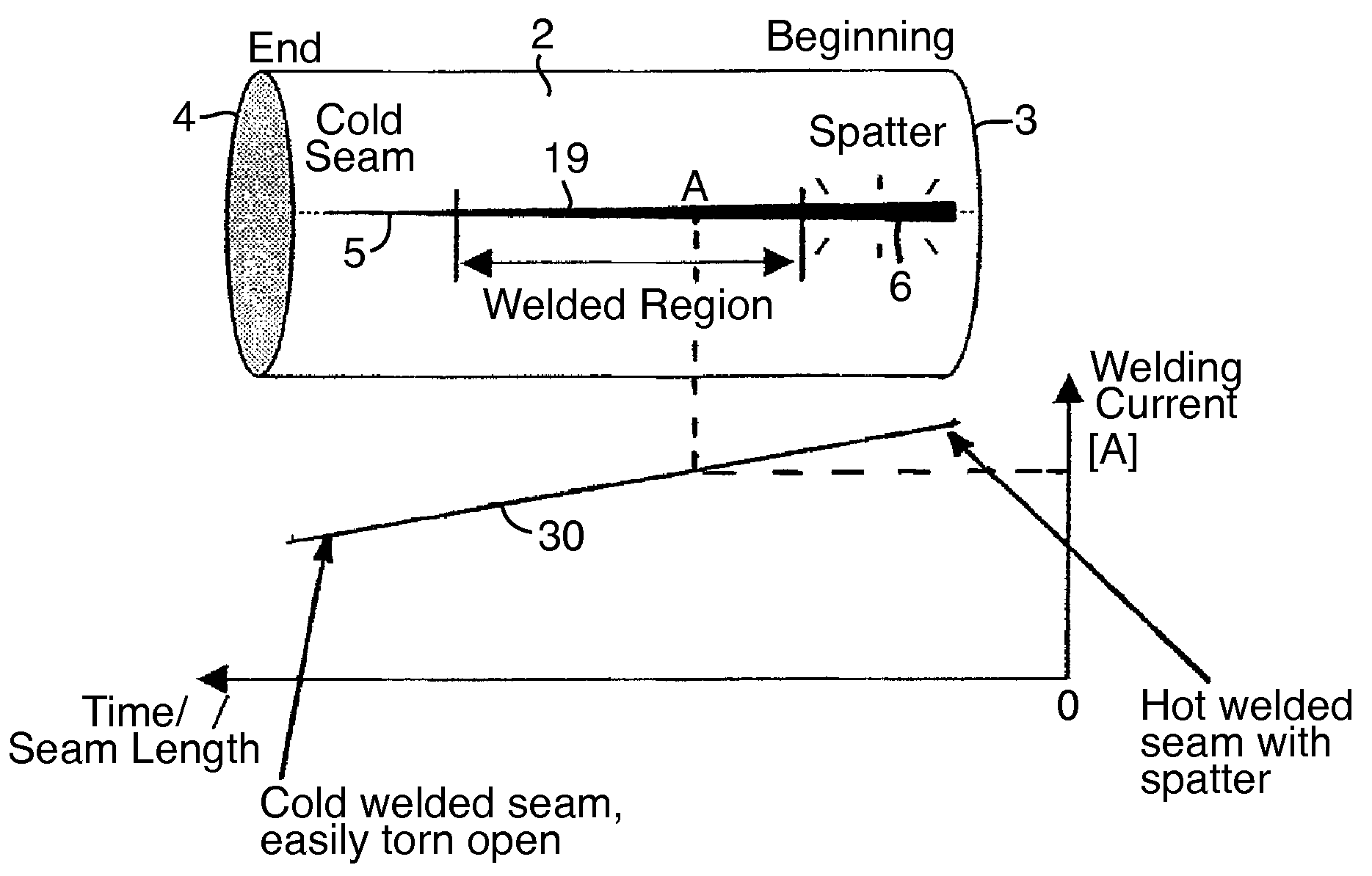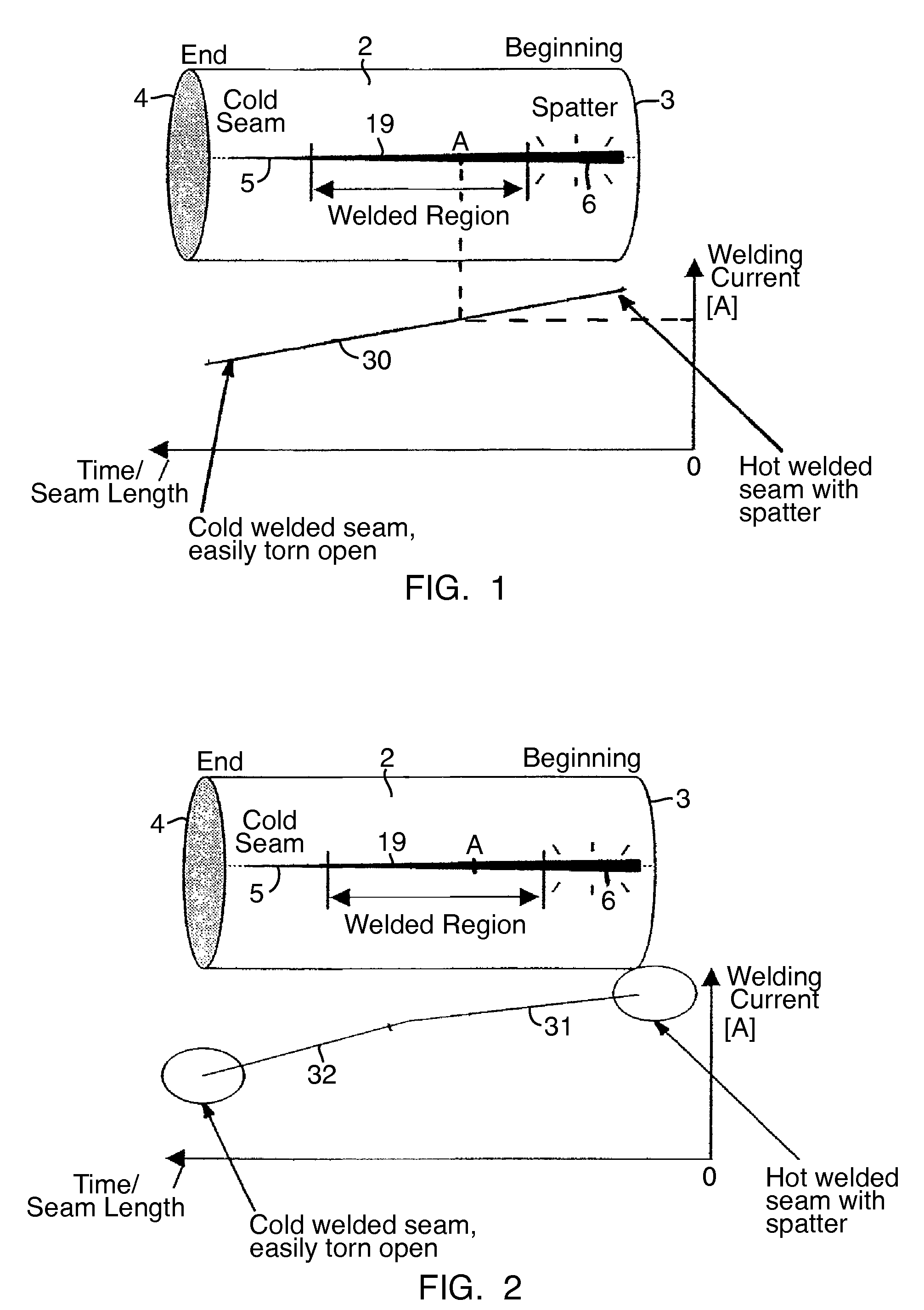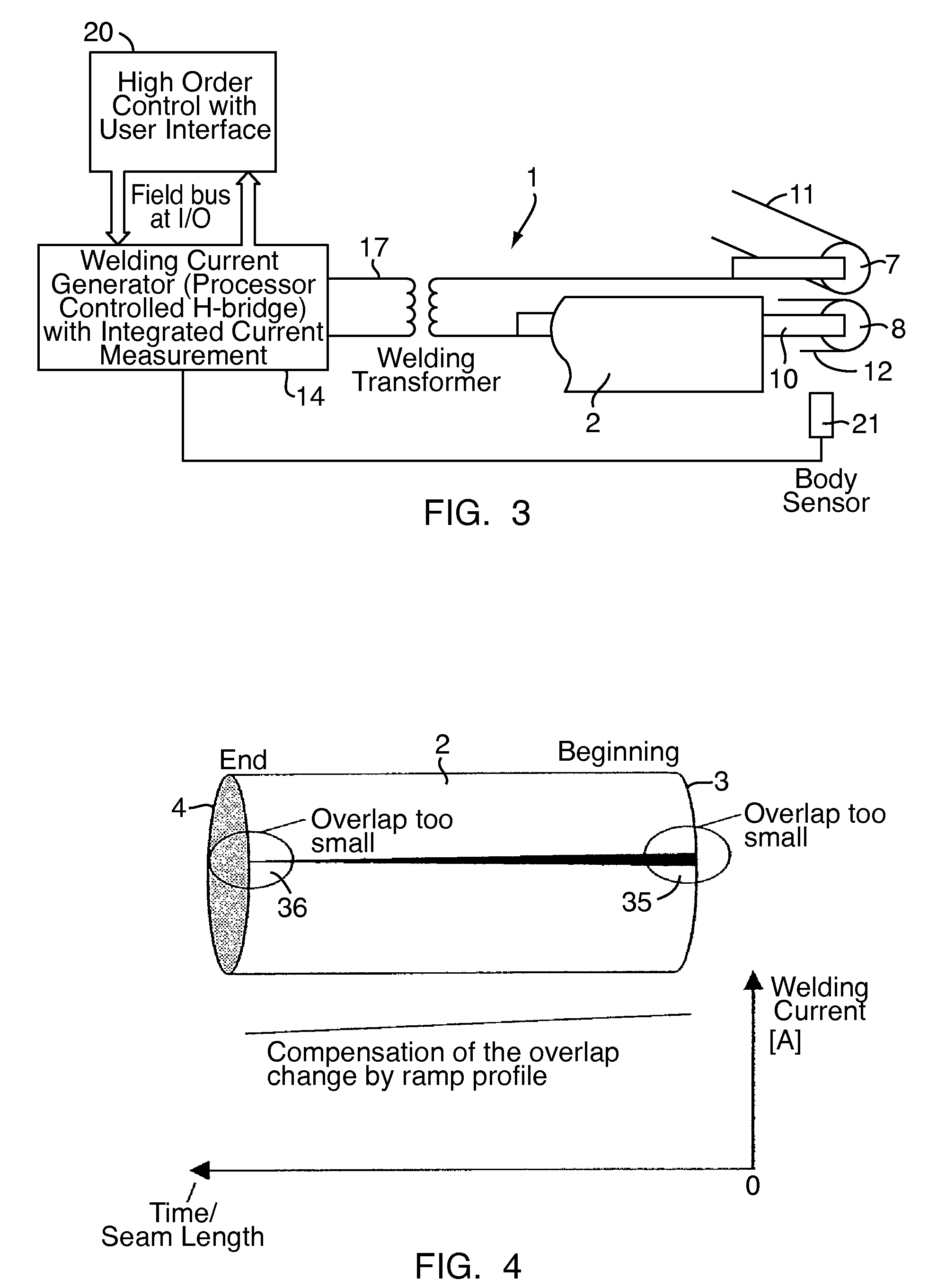Method and welding apparatus for the determination of the strength of the welding current to be used in the welding of container bodies
a technology for welding containers and welding currents, which is applied in the direction of resistive welding apparatus, welding electric supply, domestic vessels, etc., can solve the problems of body unfit for further use, too easily broken seams, and welding with a high temperature, and achieve good tearing open capability of seams and high current strength
- Summary
- Abstract
- Description
- Claims
- Application Information
AI Technical Summary
Benefits of technology
Problems solved by technology
Method used
Image
Examples
Embodiment Construction
[0014]FIG. 1 shows schematically a test container body 2, which serves for the determination of the appropriate welding current strength value to be used for the serial production of bodies made from the same sheet material as the test body, above a diagram which illustrates the welding current strength along the length of the seam of the test body 2, or correspondingly in respect to the time needed for the welding. The test body 2 is welded on a resistance seam welding machine or roller seam welding machine, which is explained in more detail in connection with FIG. 3. According to the invention now the strength of the welding current during the test welding of the body 2 along the overlapped welding seam is varied so as to fall or rise. In the illustrated example the welding current strength 30 falls during the time of the welding, or along the length of the seam, and accordingly diminishes from a starting value to an ending value. The welding current in this case, as in known ways...
PUM
| Property | Measurement | Unit |
|---|---|---|
| Length | aaaaa | aaaaa |
| Current | aaaaa | aaaaa |
| Strength | aaaaa | aaaaa |
Abstract
Description
Claims
Application Information
 Login to View More
Login to View More - R&D
- Intellectual Property
- Life Sciences
- Materials
- Tech Scout
- Unparalleled Data Quality
- Higher Quality Content
- 60% Fewer Hallucinations
Browse by: Latest US Patents, China's latest patents, Technical Efficacy Thesaurus, Application Domain, Technology Topic, Popular Technical Reports.
© 2025 PatSnap. All rights reserved.Legal|Privacy policy|Modern Slavery Act Transparency Statement|Sitemap|About US| Contact US: help@patsnap.com



